Plex: 17 September 2025
Announcing the Plex Archive; Transitioning Plex; In Search of InterComms; WHTMATZ; Scenes Seen; Falling Into Old Age; Tying Breath to Listening

The Biweekly Plex Dispatch has been published by Peter Kaminski through Collective Sense Commons on first and third Wednesdays of each month since February 2022.
This is the final issue published by Pete. Plex will be published by Kevin Jones starting with the next issue on 1 October 2025.
In This Issue
- Announcing the Plex Archive (Peter Kaminski)
- Transitioning Plex (Peter Kaminski)
- In Search of InterComms (Charles Blass)
- WHTMATZ (Peter Kaminski)
- Scenes Seen (Ken Homer)
- Falling Into Old Age (Ken Homer)
- Tying Breath to Listening (Ken Homer)
charles blass
Announcing the Plex Archive
by Peter Kaminski
Plex so far: 3.6 years, 87 issues, 614 posts, 51 authors. To celebrate, I rolled up my sleeves and created the Plex Archive, a web site containing all the posts from Plex so far, separated out as individual posts and indexed by issue, author, year, and topic. Please check it out–it’s pretty cool!
https://plex-archive.collectivesensecommons.org/
It’s about 95% done. It was a fair amount of work, with me directing Claude Code to write and rewrite a Python data extraction / conversion script. There are still things not quite right, but it’s already super easy to browse through, and each post has a link back to the issue it comes from, so you can see the post in its original context, complete with its images or videos.
If you’re one of those folks who just want to shovel text into their AI’s waiting maw, here’s a zip of all the Plex posts so far in Markdown text format.
I’ll keep working on the Plex Archive once in a while to improve it. Let me know if you’d like to help (or if you re-discover anything cool)!
charles blass
Transitioning Plex
by Peter Kaminski
As I wrote in Cabbages and Kings in the last Plex, I’m wrapping up my biweekly involvement with Plex with this issue.
But I have good news! Kevin Jones, Scott Moehring, and John Warinner, all from the Open Global Mind community, will be taking the reins of Plex and will keep publishing Plex twice a month. Kevin is interested in hearing from you! If you’ve got something of interest, particularly about the kinds of topics OGM covers, send an email to Kevin.
New issues of Plex will continue to be published at the same web address, and subscribers will continue to receive new issues in their inbox.
For paid subscribers, thank you for supporting Plex! I very much appreciate your support, and I’m sure Kevin will appreciate it, too. Your subscription payment will be paused for a few weeks, and then you’ll have a chance to move your subscription payment over to the new Plex. The move will be “opt-in” – if you want to continue your subscription, we’ll make it easy for you to do. Or if you don’t do anything, you’ll continue with a free subscription to the new Plex.
Thanks again for being part of the Plex community!
charles blass
In Search of InterComms
Plex Patterns Beat Reporting Report
by Charles Blass
- hello
- today (18 September 2025) is the 55th anniversary of the ascension of jimi hendrix
- it seems fitting to celebrate a great spirit and mourn the loss of a great artist and lover of life, while at the same time acknowledging the multi-hued greatness of the biweekly plex as championed by ‘csc’ comrade peter kaminski, now in a transitional moment hurtling toward the unknown.
- a handful of offerings follow, reflecting on the legacy and future of inter-community beat reporting and the tender origins and aspirations of ‘open global mind’ aka ogm.
- as we look forward, first let’s circle back, circa. exactly 5 years ago:
- “IF” (Interoperability Flow) - Charles Blass #OGM2025
- https://youtu.be/eV_jokeDaZ4
- (text spontaneously prepared and recited in a breakout room with jerry michalski and george pór, in an exercise of backcasting from...2025.)
- “IF” (Interoperability Flow) -- by Charles Blass
- Essentially we’ve managed to map, skip and dance our way out of a huge mess, dodging bullets Neo-style with a huge load of painstaking grunt-work documentation, crap filtering, a tiny bit of tech, and especially gobs of luck along the way. Some say it was miraculous. Others are more self-congratulatory.... crediting the (finally) unlocked Brain power of Jerry et al, and a virtually perfect choreography of subdued egos, expertises and techniques, deeply listening to our bodies -- and Body (capital B, Game B) -- emerging, coalescing and executing a truly global meta-current, empathic conspiracy in the sense of Breathing Together in the Moment.
- From this vantage point I suggest it’s been a miraculous combination of Luck and the ultimate social technology: Love.
- We achieved Interoperability Flow! Wisdom Flow!! At Scale!!!
- Step by step, conversation by conversation, group by group and project by project, we figured out how to really listen to and hear each other. This was probably the thing that took the longest amount of time in the last five years. What did you say? Sorry I wasn’t paying attention, sorry the connection was bad, could you repeat? Sorry I & AI were too preoccupied listening to our own bouncing thoughts and agendas.... sorting how we could manipulate you ...
- Hmm so we also managed to crack the Singularity code and put leashes on robot dogs, yea that happened. They behave now and we don’t have to worry. We also also solved the conundrum of how to build and be decentralized in a happy healthy global commons, treating each other with compassion, equity and generosity.
- In other words, we designed and implemented protocols for Universal Deep Profiles and Hashbins, successfully matching ideas and resources in a global ecosystem of hashverses. Aka the 2025 Nobel Prize-winning Vibranium Engine. The engine room is — simply — the dynamic repository of interoperable knowledge repositories, written, run and stored within interoperable and freely accessible languages, tools and data structures.
- (https://en.wikipedia.org/wiki/Vibranium)
- Collaboratory of Collaboratories ....
- How did we do it? If we told you we’d have to shoot you... haha just kidding! We freely share IP now, and everyone collaborates with fluidity around ideas and solutions, because we have achieved the Collective Wisdom to know what’s good for you is good for me. Turtles all the way down, and up.
- Minimum Viral Upward Spiral.
- Again, listening — deep listening — was the core to such Omniversal Interoperability and Wakandan Wisdom. Of course we had to take it to other galaxies ... where we discovered — with measurable relief, comfort and delight — we were returning to Source. That’s another story, still being written.
- So, the other key factor was house cleaning. Mucking through so much muck. At all levels and scales. That’s how we tamed the robots — sorted out their instructions to be truly ethical, after we sorted out global ethics itself. We had to take up arms (to get the proper attention and respect) but we — the real OGM-ers — did not fire a single shot. There were minimal casualties mostly from bad actors pretending to be our cohort. Bad actors became good, automagically. Our bloodless coup involved painting the White House Black (credit George Clinton for the blueprint), and cleaning our collective hard drives, caches, updating our operating systems, chat and social streams, data flows, and especially value flows. Engines, interfaces and learning curves are no longer angst-and-toxicity-ridden but smoothly purring, joyful, running on pure Vibranium -- Vibration infused with Love.
- ¡¡Viva La Lovolution!!
- “IF” (Interoperability Flow) - Charles Blass #OGM2025
- here is a miro collage, “Glass Onions” i created within the “OGM Workshop: Team 1, 29 October 2020 & beyond” (zoom out for the whole view, then zoom in and scroll around)
- note also (a) Joe Corneli’s OGM Patterns frame,
- and (b) the prolific Wholeness Egg exercise
- (“and now, for something completely different”)
- Cultivating Ecosystem Wisdom: A Peeragogical Framework for Inter-Community Learning
- A parting gift synthesizing learnings from the Biweekly Plex Dispatch experiment
- The Biweekly Plex Dispatch has demonstrated something remarkable: inter-community journalism can function as peeragogical infrastructure - what the Peeragogy Handbook calls “flexible frameworks for peer learning and peer knowledge production” scaled to ecosystem levels. This synthesis weaves together Peter Kaminski’s Plex practice, the Peeragogy Handbook’s co-learning patterns, Charles Blass’s Comms Gardening circuits, Tom Atlee’s Co-Intelligence dimensions, and June Holley’s Network transformation wisdom - offering both tribute to Pete’s experiment and practical guidance for future inter-community ecosystem peeragogy.
- Cultivating Ecosystem Wisdom: A Peeragogical Framework for Inter-Community Learning
- Core Pattern: The Peeragogical Wisdom Circuit
- Heartbeat Rhythm for Co-Learning: Peter’s bi-weekly publishing embodies Peeragogy’s Heartbeat pattern - “the recurring waves of activity that sustain the group” - while creating what Charles describes as rhythmic, iterative comms gardening circuits. This rhythm enables what Peeragogy calls peer learning where “none of them is an expert in the particular subject matter” yet communities co-learn together through systematic sharing.
- Roadmap Without Fixed Destination: The Plex operates as Peeragogy’s Emergent Roadmap - “a co-evolving plan developed by the group” where the path emerges through practice rather than predetermined curriculum. This mirrors June’s Networks of Networks approach and Tom’s universal intelligence - sensing ecosystem needs and responding organically rather than following rigid institutional structures.
- Scrapbook of Ecosystem Learning: Each Plex issue functions as Peeragogy’s Scrapbook pattern - “a record of the artifacts the group creates and the experiences they have together” - while demonstrating Tom’s multi-modal intelligence through integrating stories, images, and community insights into what Charles calls community wisdom emerging from conversational artifacts.
- Essential Roles in Ecosystem Peeragogy
- The Convening Catalyst (Peter’s Role): Functions as Peeragogy’s Co-facilitator while embodying June’s Transformation Catalyst functions. The Peeragogy Handbook emphasizes that “sometimes omitting the figurehead empowers a group” - Peter’s approach demonstrates co-facilitation that enables peer learning rather than traditional teacher-student dynamics. This requires skills in organizing co-learning, adding structure while preserving emergence, and what Tom calls inclusive stakeholder governance.
- Community Learning Partners: What Peeragogy calls peer learners who practice Charles’s wisdom reporting by capturing and sharing local narratives. They embody the handbook’s core insight that “the best way to learn about peeragogy is to do peeragogy” - developing Tom’s collaborative intelligence while contributing to June’s rippling/spreading learning across ecosystem boundaries.
- Cross-Community Learning Networks: Participants in what the Peeragogy Handbook describes as connected learning environments where “participation grows from having a community of people who learn together.” They enable Tom’s collective intelligence while contributing to Charles’s interoperability flow and June’s sharing patterns of success and challenges.
- Practical Implementation Patterns
- Start With Peeragogical Questions: The handbook’s foundational questions apply perfectly to inter-community learning: “How does a motivated group of self-learners choose a subject or skill to learn?” becomes “How do communities identify shared learning priorities across boundaries?” The Plex demonstrates organizing co-learning at ecosystem scale.
- Technology as Learning Support: Following Peeragogy’s approach where “we certainly have the technologies” but need better methods for self-learners to teach and learn from each other, automate technical processes (smart quotes, formatting, distribution) while preserving peer relationships and co-facilitation dynamics that make the learning meaningful.
- Pattern Documentation and Sharing: Apply Peeragogy’s Reduce, Reuse, Recycle pattern to replicate successful inter-community journalism approaches across different contexts while avoiding what the handbook calls Carrying Capacity overload - the risk of overwhelming individual catalysts with unsustainable workloads.
- Critical Warnings for Future Experiments
- Resist Single-Community Capture: The Plex’s power emerges precisely from its inter-community focus rather than serving any single organization or movement. As the Peeragogy Handbook warns about participation patterns, communities often want to capture valuable resources for their own use rather than maintaining broader ecosystem benefits. Future experiments must maintain multi-community accountability and resist pressure to narrow scope or serve particular institutional interests.
- Acknowledge the Labor Reality: The Peeragogy project’s own experience shows that co-learning and co-producing at this level requires substantial ongoing effort. The handbook documents how “creating the Handbook was a training course and experiment in peeragogy” - expect similar learning curves for ecosystem journalism. Plan for carrying capacity limits and build support ecosystems that can sustain the work beyond individual dedication.
- Value Proposition: Ecosystem Peeragogy in Action
- Inter-community journalism creates unique value by applying Peeragogy’s insight that “any group of people who want to co-learn any subject together” can develop effective learning methods - scaled to ecosystem levels. It integrates Tom’s co-intelligence dimensions (collective, collaborative, multi-modal, wisdom, universal, and resonant intelligence) with June’s Networks of Networks infrastructure while embodying Charles’s vision of comms gardening circuits that transform “fragmented dialogues into fertile ecosystems of collective wisdom.”
- The Peeragogy Handbook emphasizes that peer learning works best when “participation may follow the 90/9/1 principle” and “people may transition through these roles over time.” Inter-community journalism creates infrastructure for these transitions while building what the handbook calls workscapes - environments where “people are free-range learners” supported by profiles, activity streams, wikis, virtual meetings, blogs and social networks.
- A Living Peeragogical Legacy
- The Plex patterns demonstrate peeragogy in action - treating journalism as what the handbook calls “co-learning co-teaching co-producing” rather than traditional expert-to-audience transmission. Whether through new inter-community publications, organizational learning networks, or movement coordination efforts, these patterns enable the connected learning experiments necessary for Networks of Networks to flourish through genuine peer learning and peer knowledge production.
- Thank you, Peter, for demonstrating that ecosystem peeragogy is possible - journalism that serves collective learning over information extraction, peer relationships over institutional hierarchies, and co-intelligent community flourishing over competitive advantage. The emergent roadmap you’ve pioneered will continue inspiring new experiments wherever communities seek to learn and grow together across traditional boundaries.
- Sources
- Peter Kaminski with Charles Blass [Biweekly Plex Patterns], 2024-02-02
- David Witzel with Peter Kaminski [c.Dec.2023]
- Comms Gardening by Charles Blass
- Co-Intelligence by Tom Atlee
- Network of Networks by June Holley
- Peeragogy Handbook - Peeragogy Community
charles blass
WHTMATZ
What Happened To Me At The Zoo
by Peter Kaminski
Another “What Happened To Me” post. Send your WHTM to Kevin–they’re fun!
I’m lucky to live near fellow OGMer Jack Park and his wife Linda. For various reasons (pandemic among others), my wife and I hadn’t visited the San Diego Zoo or the San Diego Zoo Safari Park in our five years in living in San Diego.
Luckily for us, the zoo is one of the spots Jack and Linda visit when they’re out and about, so Jack recently invited us to tag along. That (and N95 masks as appropriate) were enough to get us to finally buy zoo memberships so we can start going regularly.
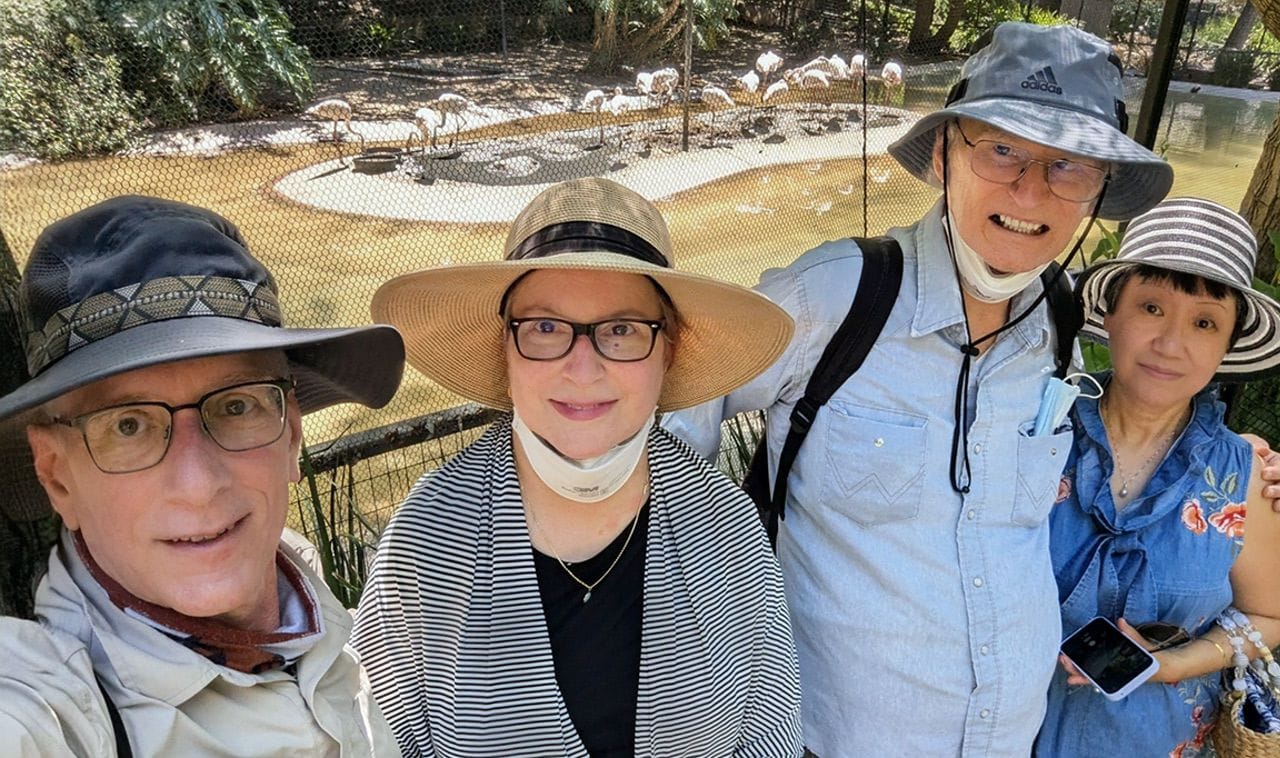
The zoo is HUGE. (The San Diego Zoo is a 100-acre wildlife park that is home to more than 12,000 rare and endangered animals representing over 680 species and subspecies. Located just north of downtown San Diego in Balboa Park, the Zoo is also an accredited botanical garden, caring for more than 700,000 individual plants, including a prominent assemblage of close to 13,000 specimens representing 3,100 species.–San Diego Zoo 2025 Fact Sheet)
Jack and Linda were friendly and capable zoo guides, and we ambled and rode (tour bus and aerial tramway) around the zoo, collecting various impressions of the animals and plants. Jack and I kibitzed about various OGM topics, too, of course. A lovely time was had by all.
charles blass
Scenes Seen
by Ken Homer
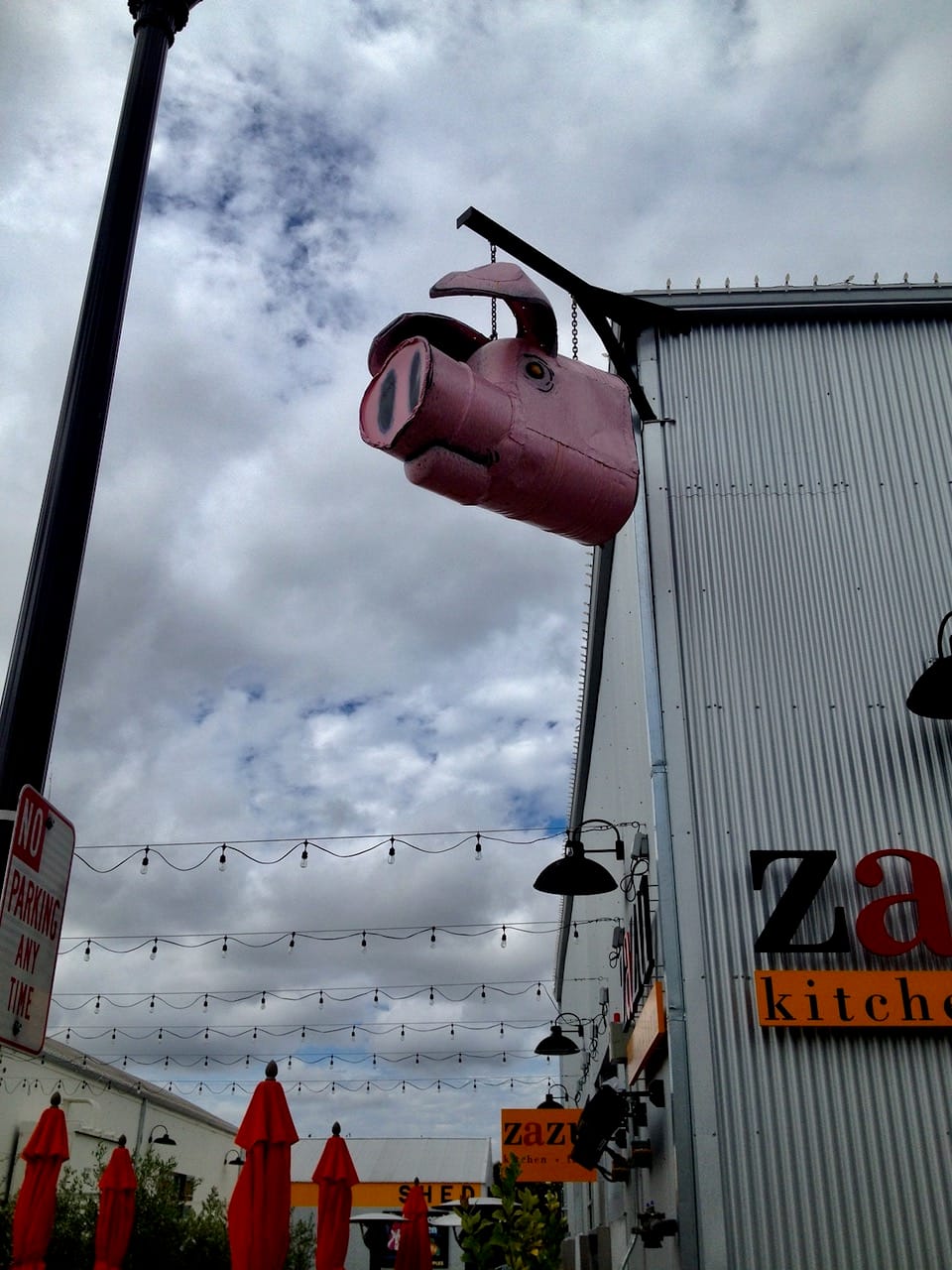
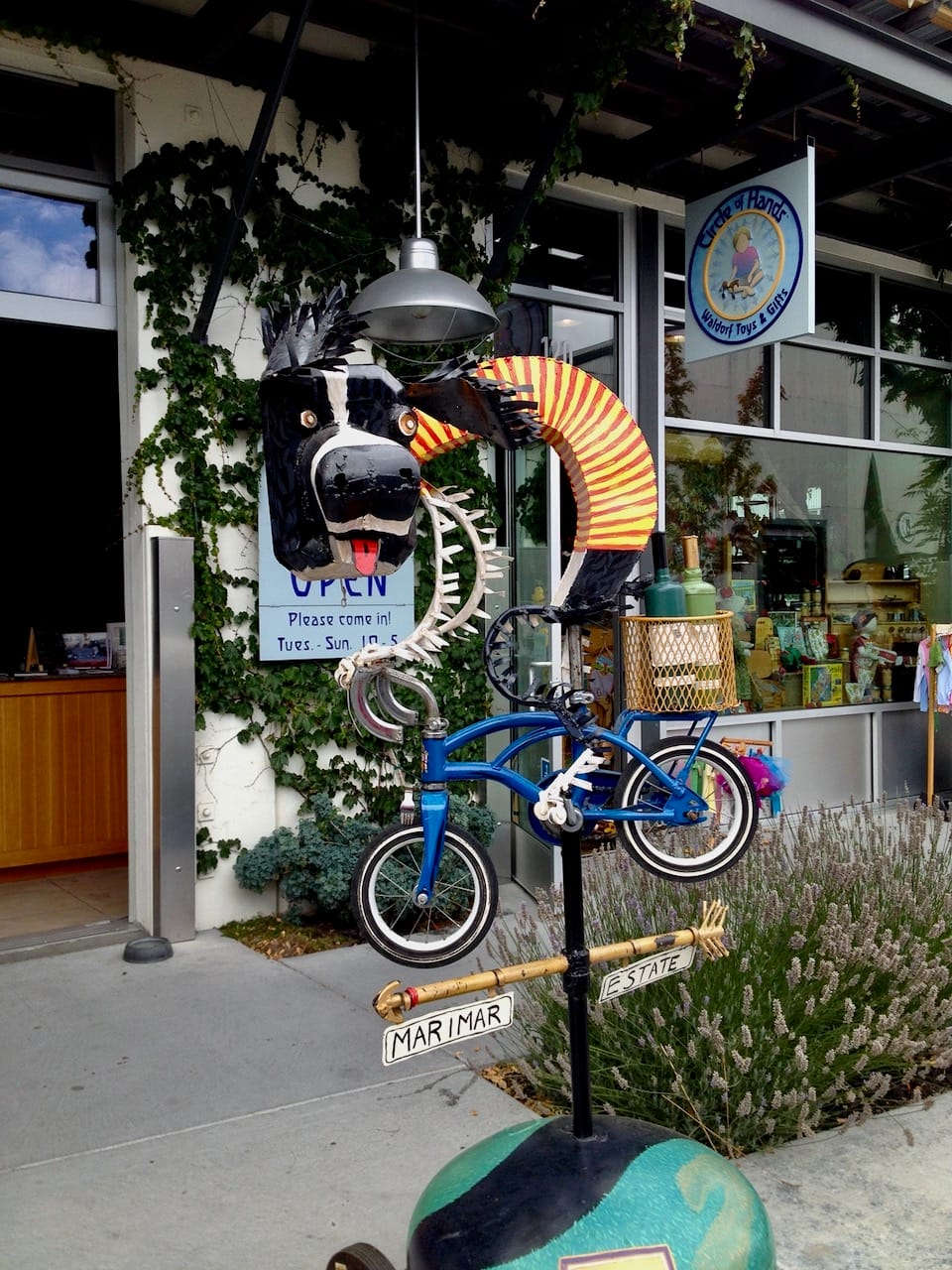
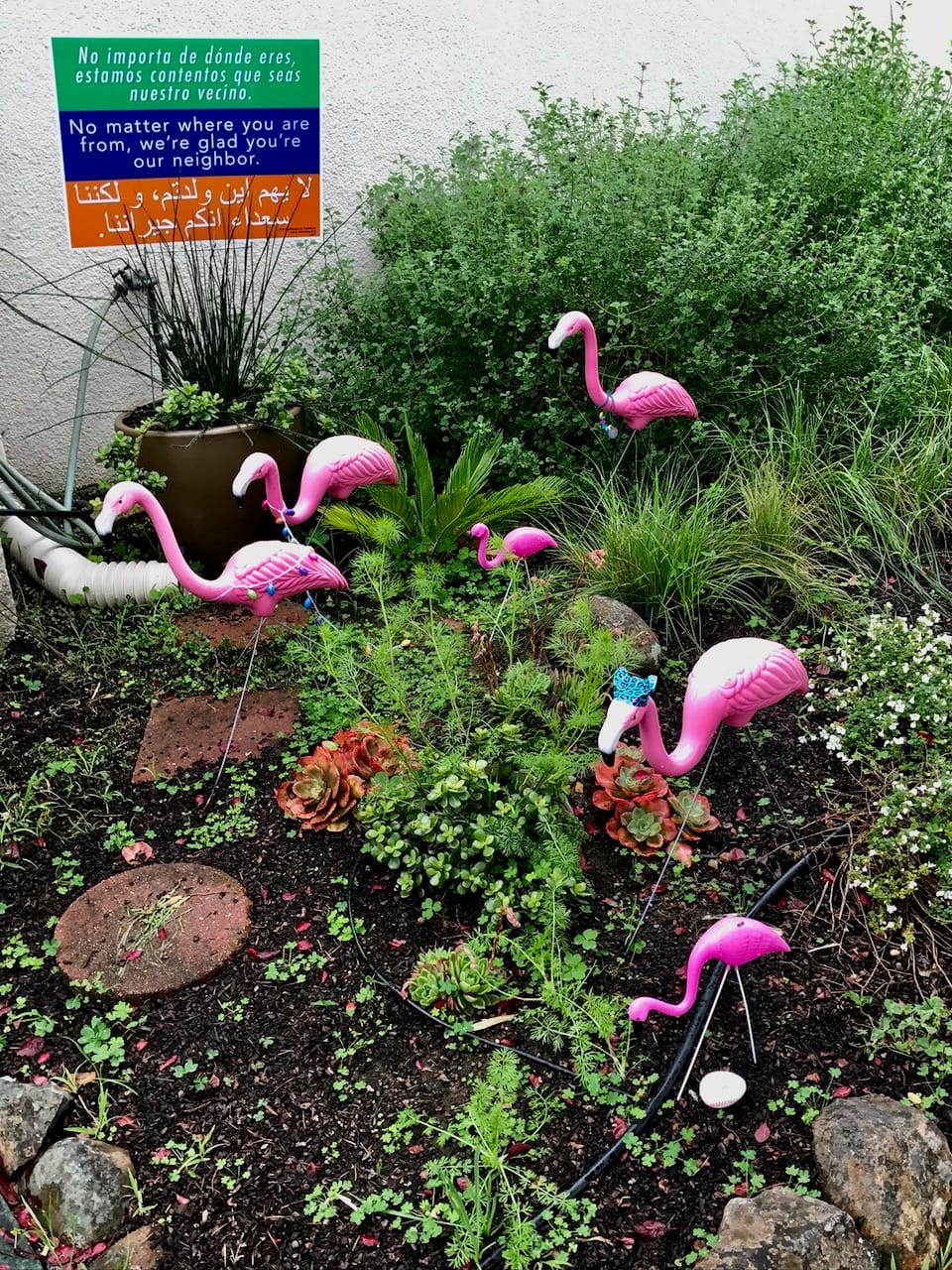

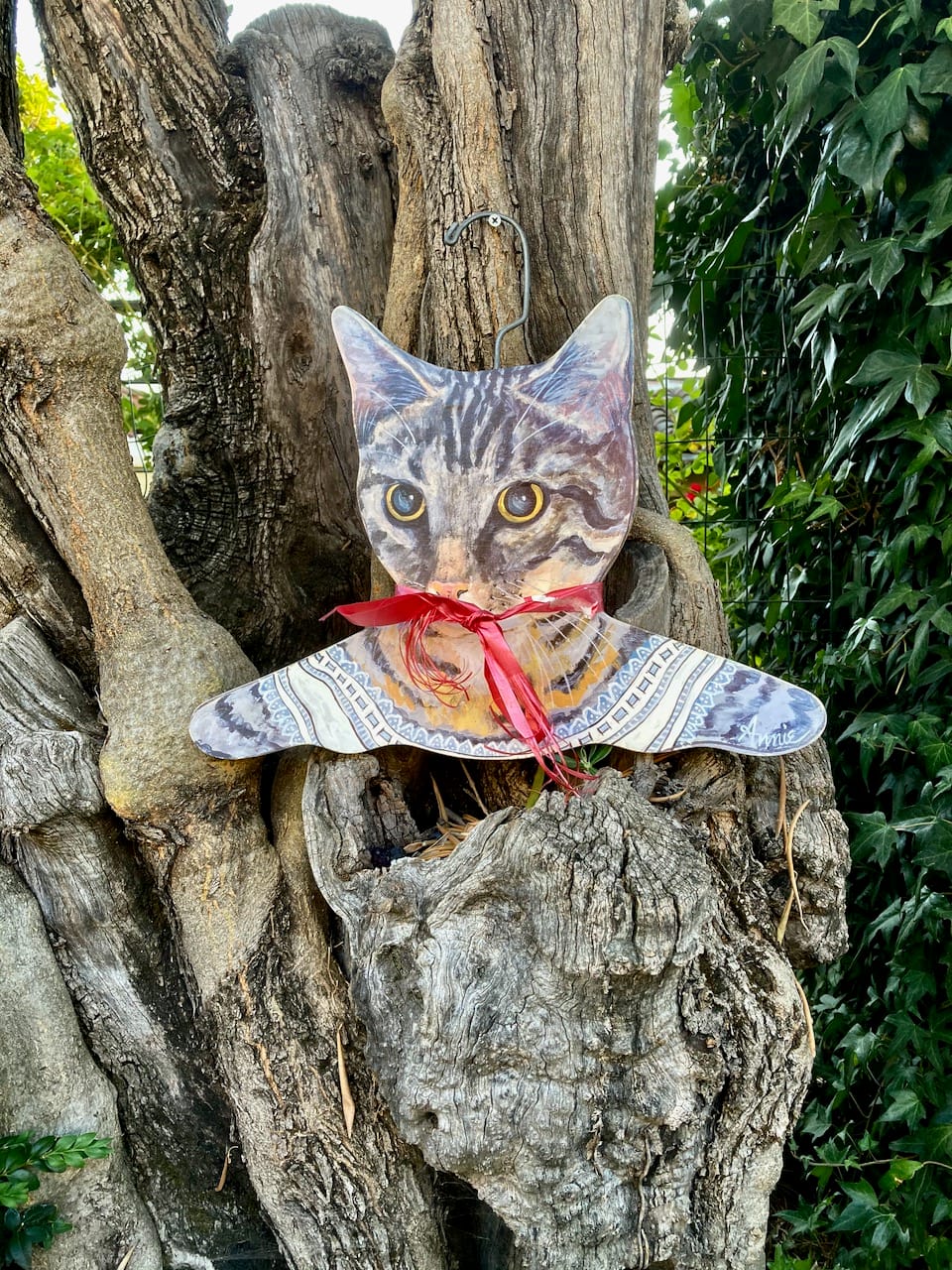
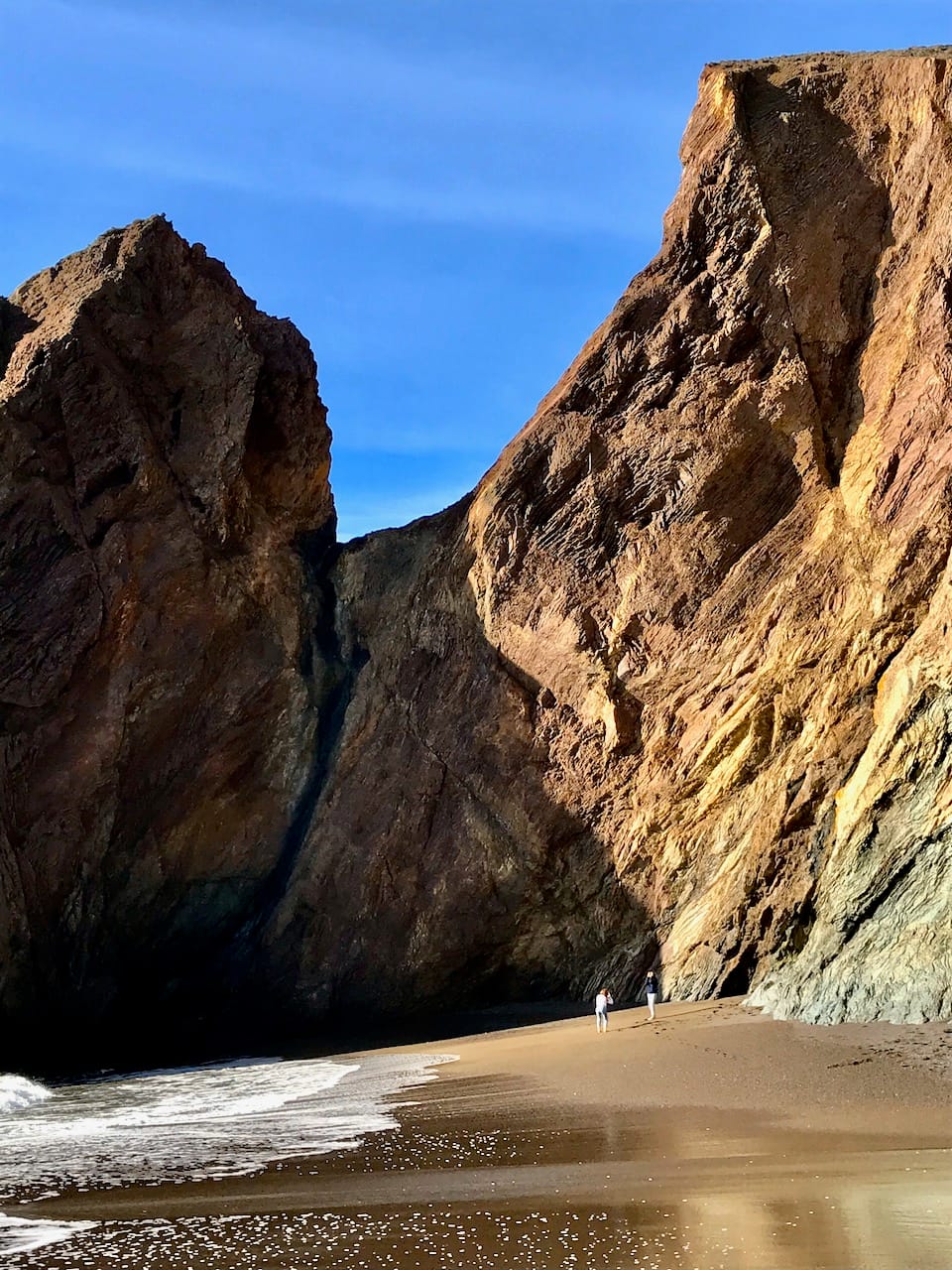
charles blass
Falling Into Old Age
by Ken Homer
I am now 68 years old
I am strong and healthy
Most people think of me as
Being younger than my years
I like to think so too
But my body sends me
Undeniable signals that
I am no longer young
In 2023, while in Grosseto Italy
I set off on a walk around the City Walls
I walked at my usual rapid pace
The pace I have used my whole adult life
The pace that gets my heart rate up
The pace that gets me breathing deeply
My toe hit a half inch rise in the paving stones
I stumbled forward several steps
Trying furiously to regain my balance
Arms flailing, I must’ve been quite a sight
For anyone who was watching
Alas, my efforts were in vain
I was too far off kilter
Inertia overtook me
Hands out to break my fall
I landed heavily on my right hand
Unfortunately, my right elbow was positioned
Directly under my ribs
Which along with my knee absorbed most of the impact
(It was three weeks before I could
Draw a full breath without pain)
And my head bounced off the stone
I mean it really bounced
The way a basketball bounces
I was stunned
Hazy
Unsure of where I was
I laid on the stones
Sinking into their hardness
My body breathing me deeply
A voice spoke to me
Then, an arm
Reached out to lift me up
But all I really wanted to do
Was lay there on the ground
I needed to recover myself
I’d been scattered by the impact
He was Italian, maybe 40
Looking with concern at this old man
Laying on the ground before him
A wave of shame washed over me
I suddenly felt achingly vulnerable
How could my body betray me like this?
I didn’t know the Italian words he spoke
But I recognized the universality of their meaning
“Are you okay?”
He helped me to stand
Brought me over to a nearby bench
Where I gratefully sat
Still trying to reassemble my sense of self
Jarred out of my normal mode of being
“Si! Si! I am okay!”
I let him know with words and gestures
He looked concerned
After my repeated reassurances
He smiled and went on his way
Something was damp and sticky on my cheek
I reached up to find a trickle of blood
Oozing from the edge of my orbital arch
It took me a moment to realize I was bleeding
I looked down
My right knee was bloody too
Because I have allergies
I always have tissues with me
I staunched the bleeding and
Slowly made my way back to my apartment
A much older man than the one who set out
On a brisk walk just moments before
Ken Homer • September 2025
charles blass
Tying Breath to Listening
by Ken Homer
As children, we all spent countless hours with a variety of teachers learning how speak. But who among those teachers taught you how to listen?
That’s a question I often pose to groups I work with. When people do volunteer that someone taught them how to listen the most common answer is a music teacher. Often people who do counseling receive some training in listening and those poor souls who have had to endure employer mandated trainings will mention active listening workshops where your advised to make eye contact and nod and smile to show you are paying attention. In her Ted Talk, NPR host Celeste Headley says “Forget that crap. There is no need to show you are paying attention if you are paying attention.”
My questions for you dear reader are: What do you do when your intention is to listen closely, but you find your attention wandering? Where does your attention go if you hear something you disagree with? Is there a link between listening well and breathing? I think there is.
Most people breathe 12 to 15 times per minute, and they breathe shallowly. When we breathe shallowly, we tend to be less connected to our bodies and more in our heads. But it is in our body where our ability to access emotions, intuition, and empathy resides. And those are critical to effective communication. Deeper breathing connects us to our body and expands our ability to be present and aware in our current situation. This can help us be more open and receptive to and more grounded and able to stay with what someone shares with us. This is how breathing relates to how we listen.
What follows is a guided tour of four different kinds of breathing and a practice that you or your team can work with to learn if it will make you a better listener.
Shallow Breathing—The first kind of listening and breathing we are going to explore is shallow breathing. Stand comfortably with your feet about shoulder width apart and your knees slightly flexed. If you are sitting, keep both feet flat on the floor and your back straight with your ears over your shoulders and your shoulders over your hips. Begin by placing your hand high up on your chest with your thumb and forefinger touching your collarbones. This breath is exaggerated intentionally to bring your awareness to how shallowing we tend to breathe.
Take five quick breaths here, breathing into your hand. Breathe in and out through your nose. Do not breathe below where your palm is touching your chest.
Most people find that breathing in this manner makes them feel light-headed. Usually when we breathe shallowly, we focus on what’s going on in our minds as we listen rather than on hearing what someone is saying. Oftentimes, we’re busy preparing our response to what they are saying—so, we don’t really hear their perspective. Shallow breathing supports shallow (level of content) listening and may increase emotional reactivity.
Moderate Breathing—The next kind of listening is a little deeper and allows us to shift our focus towards being present and listening more attentively to others. As we deepen our breathing it calms our nervous system, That allows us to focus less on what is going on in our minds, and more on what others are saying and sharing.
Move your hand to your solar plexus—that’s the area just under your rib cage in the middle of your torso. Take five breaths here, breathing into your hand. Breathe in and out through your nose. Do not breathe below where your palm is touching your body.
People usually report that this is a more calming way of breathing. Breathing more deeply is necessary for supporting brain and body when challenges arise in a conversation. It’s very common for people to take a short sharp inhale high in the chest when they are confronted with a perspective that startles or surprises them. This moves energy up into the head. What’s needed to effectively process challenge is to be more grounded and centered in our bodies. Moderate breathing supports us in dealing with challenges to our ways of thinking and perceiving and helps us to stay with the conversational threads instead of retreating into our own thoughts.
Belly Breathing—Now we are going to breathe more deeply, shifting our attention away from our minds and going more deeply into our bodies and senses. This breath may require more effort than you are used to exerting when you breathe.
Place your hand on your belly, just below you navel. Take five deep breaths here, breathing into your hand. Breathe in and out through your nose and allow your belly to swell as you breathe. Often men keep their bellies hard, guys, please allow your belly to soften as you work with this breath!
Most people say that breathing in this way makes them feel more grounded and sometimes even a little sleepy. One reason for that is because when we go to sleep, we automatically breathe more slowly and deeply. Deeper breathing gets more oxygen into our bloodstream and more oxygen to our brains as well. Our nervous systems calm down and this supports opening up our thinking processes as well as our emotional receptivity.
Belly breathing activates empathy. It allows other people to “impress” us, meaning we can become more attuned to how their emotional states affect our own. It gives us clearer access emotional sensitivity and to intuition. As we breathe more deeply and slow ourselves down, we can become more aware of what is important to the people around us, helping to improve our social and emotional intelligence.
Full torso breathing—the last breathing practice in this series is a combination of the first and third. Keeping your hand on your belly just below the navel, place your other hand high on your chest with your thumb and forefingers touching your collarbones once again. Now, breathing first into your belly, allow your whole torso to slowly fill with breath, expanding gradually from your belly to the very top of your lungs before exhaling through your nose. This breath may be hard at first, but you’ll soon master it.
The future is constantly being born in each moment, yet most of us have very little awareness of this. This kind of breathing will help us to stay fully present and attuned to the subtle cues of when the future is attempting to emerge between us. Sometimes, what is enlivening in a conversation is easy to spot. Words are spoken that raise the hair on your arms or you find yourself leaning in of perhaps feeling aversion. Other times it is more subtle. Full torso breathing can support us in attending to what is enlivening.
This breathing practice is easy to incorporate into your daily life. And what’s great is that nobody needs to know that you are doing anything. The next time you are talking to someone, and you find yourself challenged or your attention wandering, simply move your hand to your belly and breathe more deeply and see if helps you to shift your attention and recover your ground and center.
Conspiracy Theory—Applying this practice in your life and work
The Latin word “conspire” translates literally as to breathe together. I have a theory that people who take the time to breathe together have better conversations. I invite you to try this out for yourself.
When I work with a group on an ongoing basis I use this practice as a foundation. Once people know the four breaths, we start our all our gatherings by breathing together. We skip the shallow breathing and focus on the three deeper breaths taking seven breaths for each one for a total of 21 breaths.
Taking 21 progressively deeper breaths together has several benefits. First it slows your mind down, shifting the focus from the speed of thought to connect with the slower rhythms of the body. It also increases your presence, supports a greater attunement to all your senses, and helps you in expanding your focus of attention.
Lung capacity—the average adult has a lung capacity of five liters. The average volume of air that most adults take in with a single breath is half a liter! For every quarter inch more depth that you move your diaphragm on an inhale you will take in an additional half liter of air.
Nervous system regulation—slow, deep breathing calms the nervous system. This in turn increases emotional and social intelligence by lessening reactivity and supporting limbic resonance.
Why breathe through your nose? Inside your sinus cavities is a signaling molecule called nitric oxide (NO) which has numerous cardio-vascular, nervous system, and immune system benefits. These benefits are only realized by breathing through the nose. If you breathe in through your nose and exhale through your mouth you will not activate NO or receive its benefits.
Breathing together tends to slow the conversation down, allowing more reflection. It also co-regulates the nervous systems of everyone present and over time can have profound impacts on a group’s ability to work through difficult conversations. One senior engineering team I worked with told me that after three months of doing this practice, they all felt their ability to accept and work with dissent and divergent views was greater and that their collective decision-making process had improved.
Breath is life! Breathing consciously supports your ability to be more present, connected and alive, while improving your ability to listen for what matters.
©2025 Ken Homer – feel free to distribute with full credit to the author and no changes to the content
charles blass
Thank you for reading! The next issue will be published on 1 October 2025. Email Kevin with suggested submissions.
Grateful appreciation and many thanks to Charles Blass and Ken Homer for their kind contributions to this and many more issues. You rock!